

CarExpert.com.au
The CarExpert team's favourite cars of 2025
2 Days Ago

Design Contributor
In this series of articles, we are going to examine the faux grilles, air intakes, scoops, inlets, exhausts, skid plates, and decorative elements pretending to be something they are not.
The goal isn’t to take pot shots at automotive designers, as in most cases their “cheats” make the car look more stylish.
Instead, we want to reveal the functional and decorative elements of a car’s bodywork as the latter become more common.
This week we are going to examine the new Audi RS6 Avant. But before we move on to the design, let’s see the technical data.
The fourth generation of the Audi RS6 Avantwas launched at the 2019 Frankfurt motor show as the flagship of the A6 range.
It’s fitted with a twin-turbo 4.0-litre V8 engine producing 441kW of power and 800Nm of torque, working together with a 48V mild-hybrid system. An eight-speed automatic transmission sends power to a quattro permanent all-wheel drive system, as well as the optional quattro sport differential on the rear axle.
Thanks to all that, the car accelerates from 0-100 km/h in 3.6 seconds while top speed is electronically limited to 305km/h with the optional dynamic package plus.
The RS6 is equipped with adaptive air suspension which lowers when needed, or the optional and even more capable RS sport air suspension with Dynamic Ride Control system.
This can also be combined with the optional dynamic all-wheel steering. The standard RS baking system consists of ventilated and perforated discs, however, there is also the optional ceramic brakes with even larger discs and callipers painted in grey, red, or blue.
The behaviour of the car can be toggled through six different drive modes.

Visually, the RS6 can be easily distinguished by the more down-to-earth versions of the A6 thanks to an ultra-aggressive bodykit. From every angle, it is clear that this car is focused on performance, even though its station-wagon body style can be misleading to the untrained eye.
Audi claims that the only body panels shared with the A6 Avant are the front doors, the roof and the tailgate.
At the front, the darkened headlights with Matrix LED tech (optional) are shared with the A7, and sport a cleaner design than on the A6/S6. The bonnet has additional dynamic lines creating a soft bulge that hints on the powerful engine sitting underneath.
Between the bonnet and the grille, we find non-functional “quattro” slits which have become the signature design element of all the latest Audi models.

The front bumper is dominated by the wide, hexagonal Singleframe grille finished in gloss black. As you can see from the image above, a part of the grille is blocked (area highlighted in red), housing the licence plates and the sensors, even though it is dressed on the same honeycomb structure for a meaner look.
The huge – and almost fully functional – side inlets on the front bumper, are inspired by the Audi R8 and feature vertical blades on each side.
On the profile, the flared wheel arches (front and rear) add 40mm to the width of the car. In order to better integrate them with the bodywork, Audi designers changed the design of the rear doors and added side sill extensions.
Those elements bring greater focus on the RS-specific 21- or 22-inch wheels which contribute to the enhanced proportions, making the RS6 Avant look more planted while showcasing the large brakes.

Moving over at the back, there is a rather discreet – but also electrically extended – roof spoiler covering part of the sloping rear window.
The LED graphics on the taillights provide a high-tech look while the RS-specific rear bumper is a lot more prominent – not only compared to the regular A6 Avant, but also to the sporty S6 Avant. The star here is the matte aluminium diffuser trim blade which surrounds non-functional inlets (highlighted in red).
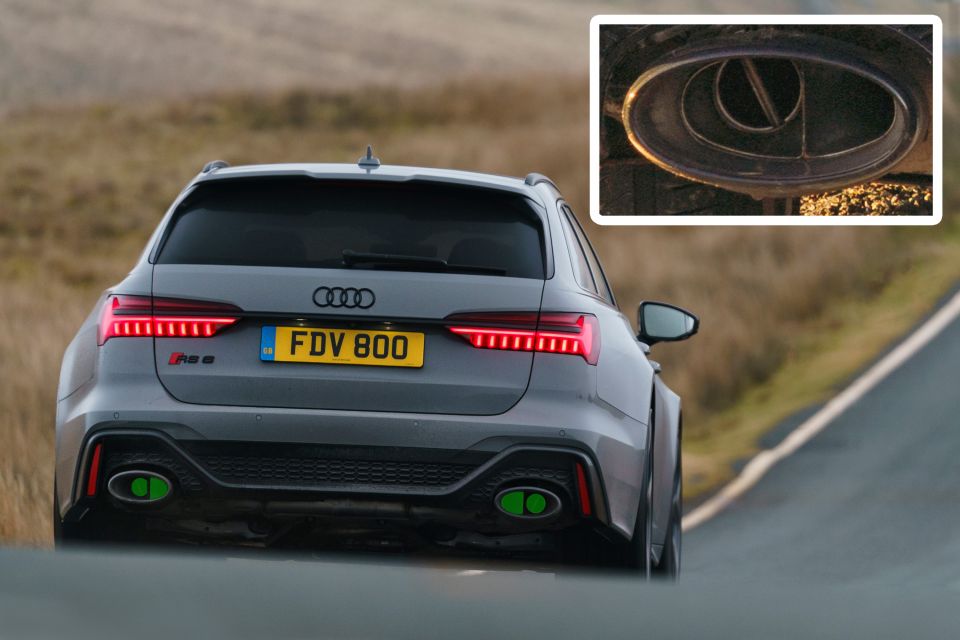
Another signature design feature of the RS models is the dual oval-shaped tailpipes finished in chrome or gloss black. On the RS6, they are some of the largest we have ever seen on a stock production car and surprisingly, they are fully functional.
A closer examination reveals the active valves on the outer side of each exhaust pipe, which allows for a more intense roaring sound when the driver selects the RS driving modes.
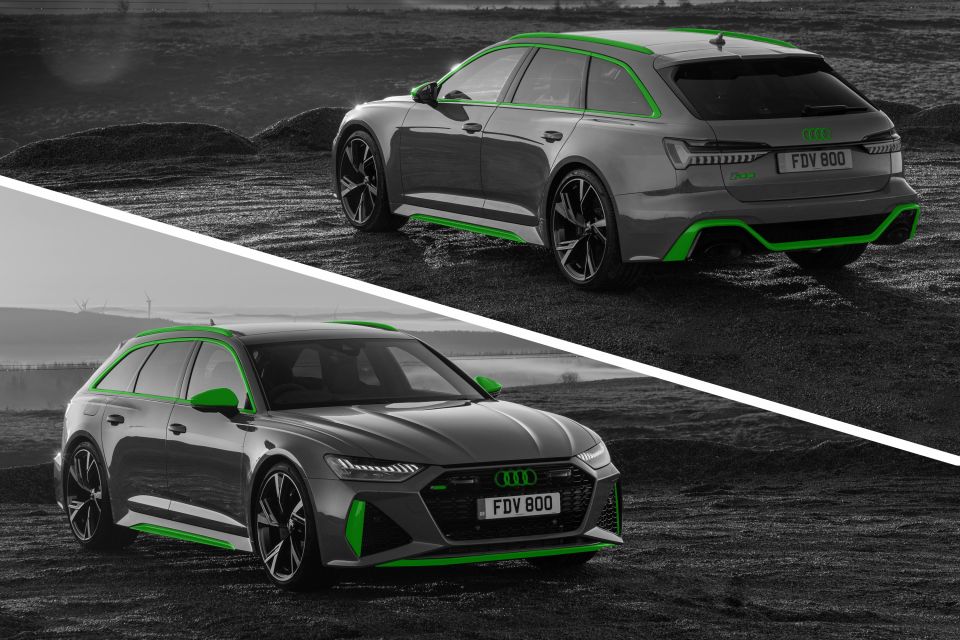
The front blades along the front splitter, the side sill inserts, and the rear diffuser trim can be specified in three different trims – matte aluminium, gloss black, or gloss carbon fibre (highlighted in green on the image above).
In similar fashion, the roof rails, the side window frame, the mirror caps, the Audi rings and the RS logos can be finished in either matte aluminium or black accents in order to match the rest of the aero components.

Inside the cabin, the sporty touches include a flat-bottom perforated sport leather steering wheel, aluminium gearshift paddles, illuminated door sills, sport seats dressed in a combination of Nappa leather and Alcantara (optionally trimmed in perforated Valcona leather), coloured belt straps, contrasting stitching and inlays in (real) carbon fibre, wood or matt aluminium trim.
Additionally, the 12.3-inch Audi virtual cockpit, the 10.1-inch central touchscreen and the optional head-up display, feature RS-specific graphics, providing some extra information on the current status of the car which can be useful on a track day or during spirited driving.
It seems that most of the high-grade materials used in the RS6 are exactly what they look like. Generally speaking, it is difficult not to acknowledge Audi’s great work in the quality, fit and finish of the interior.
Design-wise, the only “misleading” feature is the continuous strip on the top edge of the dashboard which looks like a continuous air vent – obviously it is a commonly used styling trick to make the dashboard appear wider and sleeker.
Last but not least we shall not forget that behind the power tailgate, there is a practical luggage space ranging from 565L in a five-seat layout, up to 1680L when the rear seats are folded.
Where expert car reviews meet expert car buying – CarExpert gives you trusted advice, personalised service and real savings on your next new car.


CarExpert.com.au
2 Days Ago


Max Davies
9 Days Ago
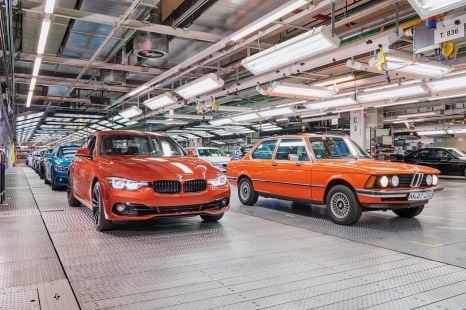

Ben Zachariah
11 Days Ago
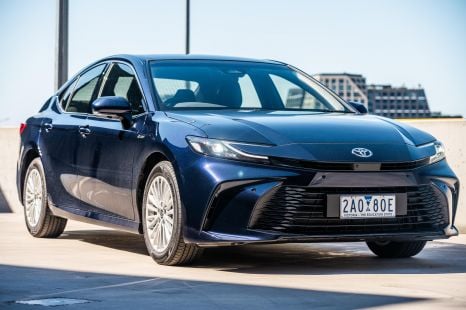

William Stopford
2 Months Ago
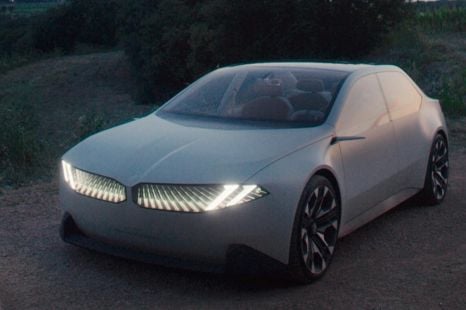

Damion Smy
2 Months Ago


Max Davies
2 Months Ago